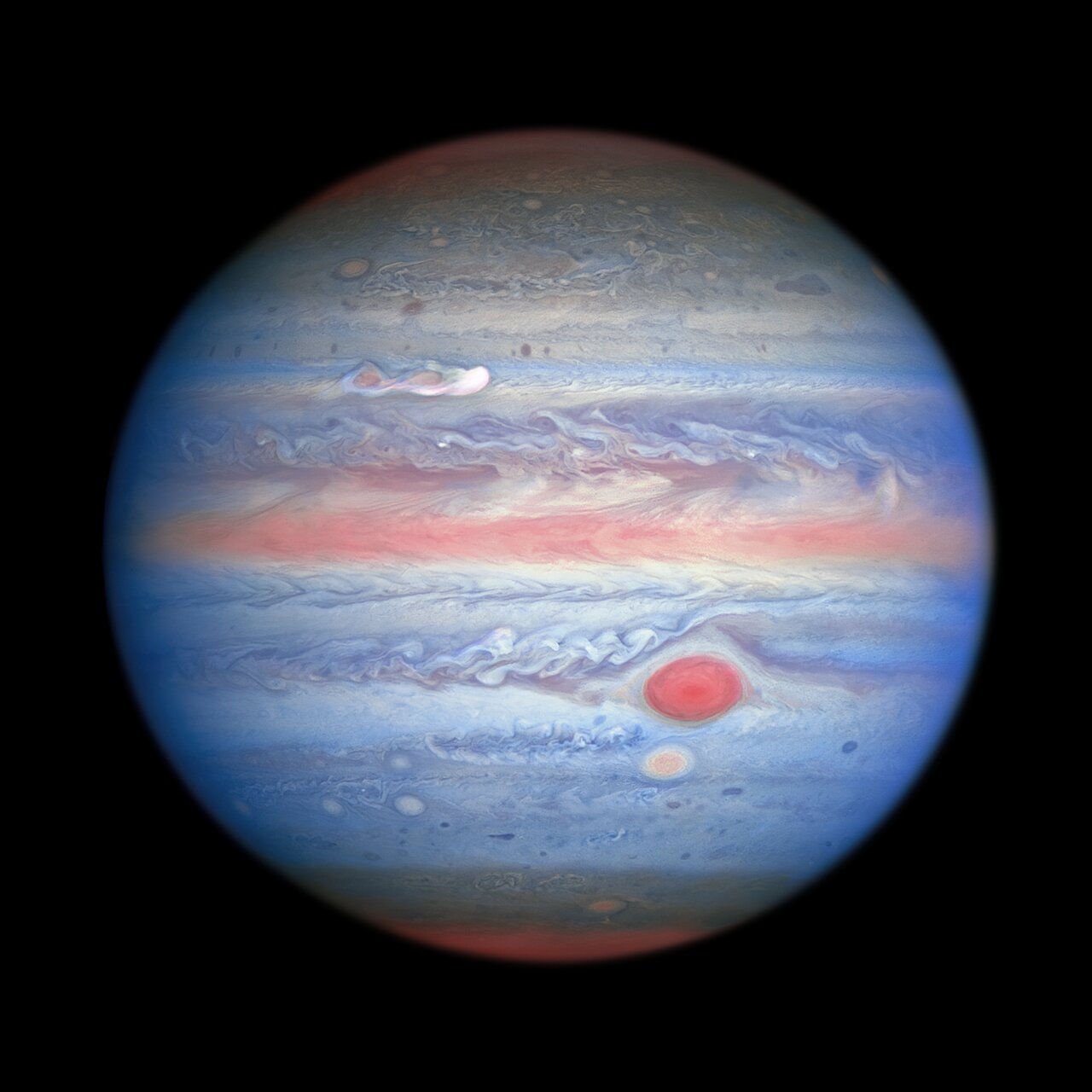
It's like somebody put Jupiter under a blacklight.
A new photo by the Hubble Space Telescope shows the solar system's largest planet in surprising pastel hues.
The image, captured on Aug. 25, combines data in ultraviolet, visible and near-infrared light to give researchers a new look at Jupiter, one that could reveal insights about the gas giant's thick atmosphere.
Related: The best Hubble Space Telescope images of all time!
"In this photo, the parts of Jupiter’s atmosphere that are at higher altitude, especially over the poles, look red as a result of atmospheric particles absorbing ultraviolet light," Hubble team members wrote in a description of the photo, which was released on Thursday (Sept. 17). "Conversely, the blue-hued areas represent the ultraviolet light being reflected off the planet."
The white storm in the upper left portion of the image, which first boiled up on Aug. 18, "is grabbing the attention of scientists in this multiwavelength view," Hubble team members wrote. "The 'clumps' trailing the white plume appear to be absorbing ultraviolet light, similar to the center of the Great Red Spot, and Red Spot Jr. directly below it. This provides researchers with more evidence that this storm may last longer on Jupiter than most storms."
Hubble, a joint project of NASA and the European Space Agency, launched to Earth orbit aboard the space shuttle Discovery in April 1990. Scientists soon realized that the big scope had a flaw in its primary mirror, which spacewalking astronauts fixed in December 1993.
Get the Space.com Newsletter
Breaking space news, the latest updates on rocket launches, skywatching events and more!
Astronauts maintained and upgraded Hubble on four additional servicing missions after that, the last of which occurred in 2009. As the new Jupiter photo shows, the telescope is still giving astronomers and the public amazing views of the cosmos, three decades after its launch.
Mike Wall is the author of "Out There" (Grand Central Publishing, 2018; illustrated by Karl Tate), a book about the search for alien life. Follow him on Twitter @michaeldwall. Follow us on Twitter @Spacedotcom or Facebook.
Join our Space Forums to keep talking space on the latest missions, night sky and more! And if you have a news tip, correction or comment, let us know at: community@space.com.

Michael Wall is a Senior Space Writer with Space.com and joined the team in 2010. He primarily covers exoplanets, spaceflight and military space, but has been known to dabble in the space art beat. His book about the search for alien life, "Out There," was published on Nov. 13, 2018. Before becoming a science writer, Michael worked as a herpetologist and wildlife biologist. He has a Ph.D. in evolutionary biology from the University of Sydney, Australia, a bachelor's degree from the University of Arizona, and a graduate certificate in science writing from the University of California, Santa Cruz. To find out what his latest project is, you can follow Michael on Twitter.
-
rod That is quite a picture of Jupiter here by HST. I enjoyed some great views of Jupiter the evening of 05-Sep using my 10-inch Newtonian but nothing like HST :) I viewed from 40x to 120x using #58 Green filter, many cloud bands and Great Red Spot rotating into view and across the central meridian that evening while I observed along with the Galilean moons. Saturn was also a great target that night too.Reply









